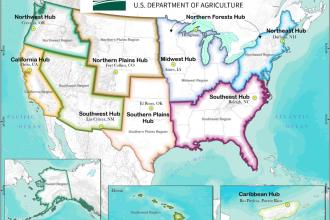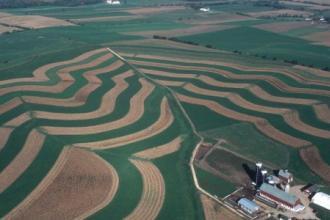About WAIC
WAIC curates research-based scientific materials and tools describing the relationship between agricultural management systems and natural resource quality and quantity.
Featured Topics
Collaborations
Long-Term Agroecosystem Research (LTAR) Network

The USDA LTAR research network is designed to sustain crop and livestock production and ecosystem services from agroecosystems.
USDA Climate Hubs

The USDA Climate Hubs link USDA research and program agencies in their regional delivery of timely and authoritative tools and information to agricultural producers and professionals.
Conservation Effects Assessment Project (CEAP)

USDA's CEAP is a multi-agency effort led by the Natural Resources Conservation Service (NRCS) to quantify the effects of conservation practices and programs on agricultural land.
WAIC Background
The Water Quality Information Center (WQIC) was established in 1990 in support of the USDA’s dedication to protecting the Nation’s water from contamination by agricultural chemicals and waste. The Center’s name was subsequently changed (2016) to reflect the inclusion of related conservation topics augmenting mitigation practices.
WAIC serves a variety of water-resource professionals, including scientists, policy makers, economists, engineers, and growers. The Center collaborates regularly with other federal agencies and organizations pursuing similar interests.
Contact Us
Use the National Agricultural Library's Ask a Question
Questions will be answered by WAIC Technical Information Specialists.
Phone: (301) 504-6077
